My family has lived in Pakistan, in the historic city of Lahore, Punjab since Partition (when India was split in 1947 to make modern-day Pakistan and Bangladesh).
It’s really good, much more beautiful than I imagined.
It’s very peaceful, it gives a strong feeling of home and there’s a lot of hospitality here. No one is a stranger. It’s never quiet but it’s never too loud either. There are huge trees everywhere you go in the city. When it rains here, it smells so fresh and kids go outside because they’re so excited. Also, everyone in the neighborhood raises stray cats and dogs together. There’s a lot of heat but there’s always a cool wind blowing and large trees so it feels nice going outside.
– a text message I sent to my friend while in Pakistan, May 2018
Wedged between China, India, Afghanistan, and Iran, Pakistan is home to the world’s seventh largest population, 76 languages and countless cultures. Evidence of the country’s layered history, that dates back to 3000 BCE, is found throughout the diverse landscape. Due to the plethora of languages and deep appreciation of poetry, Pakistan is known for both its contemporary and folk music. Good food and music are guaranteed across the nation.
The history of Lahore, Punjab’s provincial capital, can be traced back 4,000 years. The city’s architecture reflects its layered history. The city was under Muslim Mughal rule for more than 200 years, followed by 50 years of Sikh rule, before British occupation, and eventually Partition in 1947.
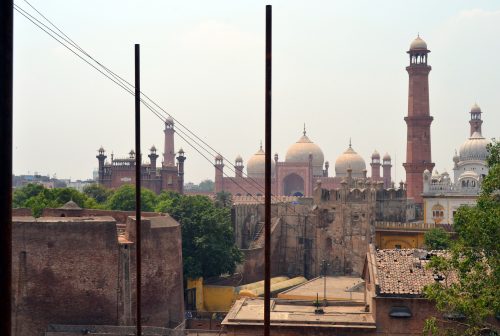
Due to building restrictions, there are no high-rise buildings, allowing historic monuments to maintain their central presence in the cityscape.
The Walled City of Lahore is a collection of thousands of years of architecture, with a large amount of its development happening under Mughal emperors such as Shah Jahan and Aurangzeb. The Walled City has 12 gates and is home to the largest spice market in Asia.
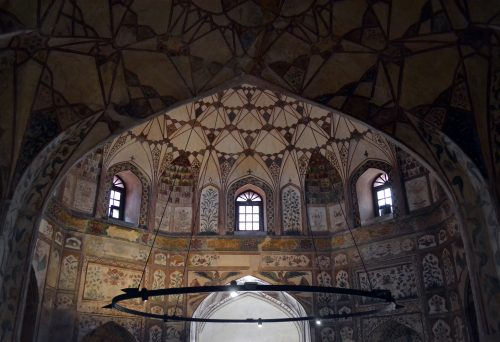
Located at the edge of the Walled City, next to Delhi Gate, is the Shahi Hammam, a Persian-style bathhouse built in the 17th century. The bathhouse was accessible to all citizens, contained warm and cold baths, and was designed and ornated to elicit the feeling of heaven on earth. Well-engineered, water was always warm without needing to be handled by workers. There is a room in the bathhouse where if you softly whisper in one corner the person on the opposite side of the room can hear you in their corner.
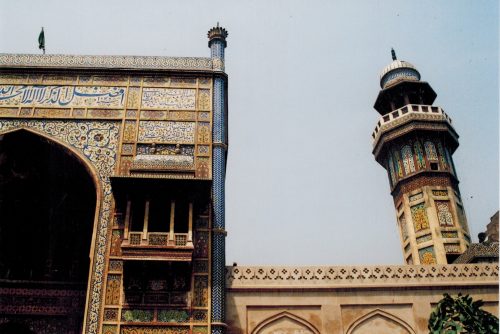
Located further into the Walled City is Wazir Khan Masjid. Wazir Khan was a physician that gained favor with Emperor Shah Jahan and was made a governor. He commissioned this mosque for the ordinary citizens of Lahore.
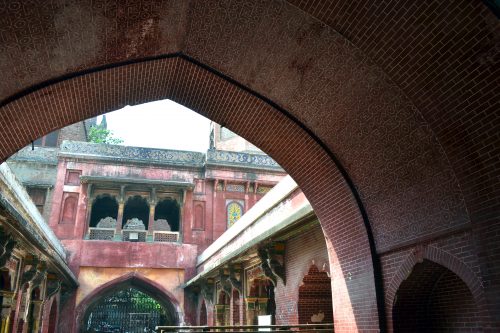
The mosque is considered one of the most elaborately detailed mosques in the world, and can arguably be called the most beautiful mosque on the planet. The elegant and detailed artistry seen throughout the mosque (even in the brickwork) is more than enough to take one’s breath away, however, despite the intricate designs, perhaps because of them, the mosque creates a comforting and calming experience. It feels like coming home. It makes you feel safe, loved and a part of a community, and for these very reasons, it is a space highly treasured by Lahoris so hopes are high for its conservation and restoration.
A few kilometers away from the Walled City are Lahore’s Shalimar Gardens. Emperor Shah Jahan made Shalimar Gardens in cities across India, however, the most famous are the ones in Lahore.
The garden is split into seven levels, representing heaven, and each level gets more elaborate and exclusive. The gardens at the beginning were meant to be for the general public while gardens further down were meant only for nobles or the emperor’s family. Again, very well engineered, the pavilion in which the emperor sits is designed in a way in which the emperor would always feel the wind.
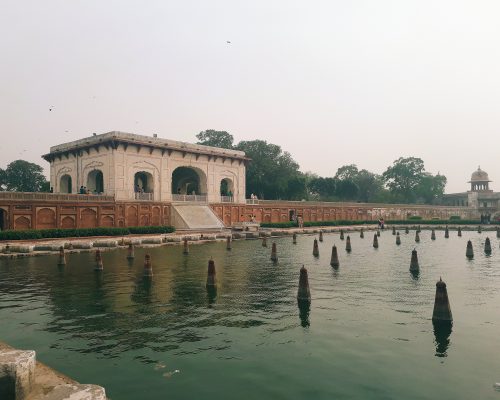
The fountains are carved in a way to make it look as if there are fish jumping through the water. Declared a World Heritage Site by UNESCO, the gardens are constantly being conserved and restored. The gardens are now a calm space for the public where one can escape the city.
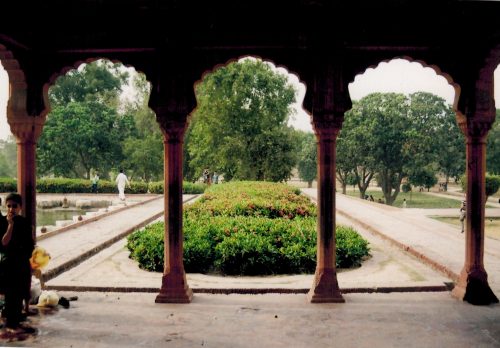
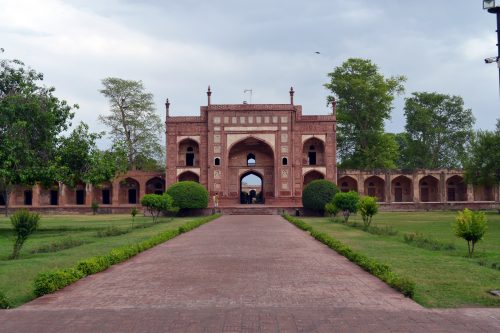
Further away from the center of the city is the resting place of the influential Mughal Emperor, Jahangir. Despite being a tomb, the space is open, full of light, and elegantly decorated, inviting travelers with open arms. The tomb is a series of courtyards surrounded by rooms for pilgrims to stay in. These are no longer in use, however, the tomb and place of worship itself are still open and newly restored.
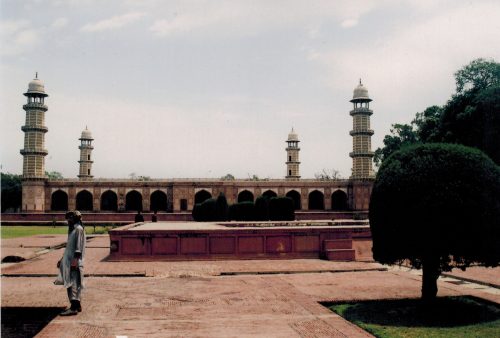
The tomb itself is laid out similarly to a mosque. Intricate handcrafted patterns depicting the path to heaven adorn the interior space leading to Jahangir’s grave as a final prayer for the emperor to find his way to peace.
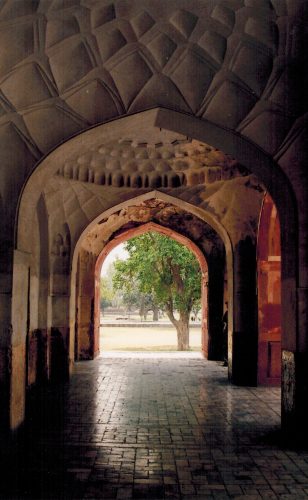
Relatively less popular compared to other Lahori monuments, the Tomb of Jahangir is a beautiful space that creates a peaceful and mysterious environment.
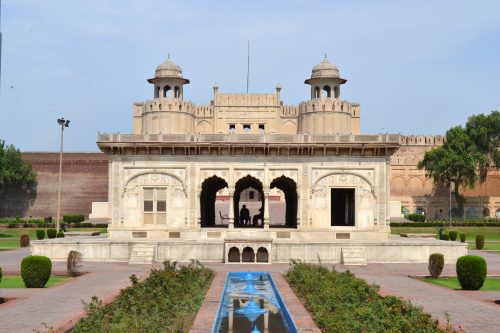
Back in the center of the Walled City is the Lahore Fort, a palace that historians say has sections dating back 4,000 years. However, Lahore Fort as we know it was made by the Mughal emperor Shah Jahan and expanded by Aurangzeb.
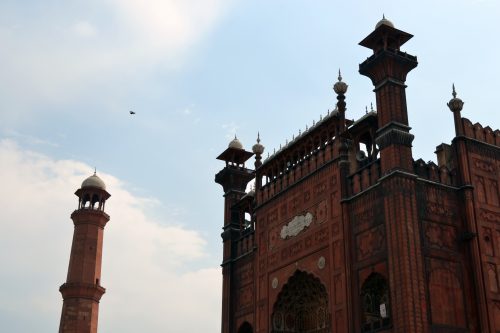
As a fortress filled with a large number of outdoor spaces due to the hot climate, it can be considered a city of its own. Aurangzeb made the Fort’s Alamgiri Gate facing his greatest treasure, the Badshahi Mosque, whose entrance is pictured below and in between the two is the Hazuri Bagh, a garden built by the Sikh ruler, Ranjit Singh.
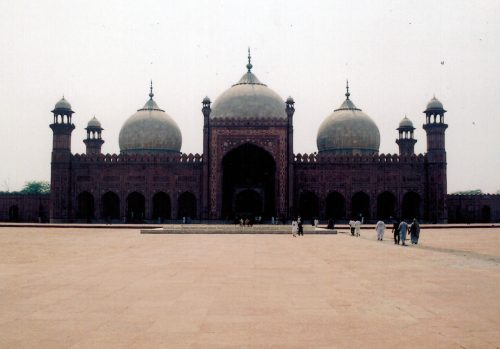
Considered the heart of Lahore by many, including Aurangzeb and myself, is the Badshahi Mosque.
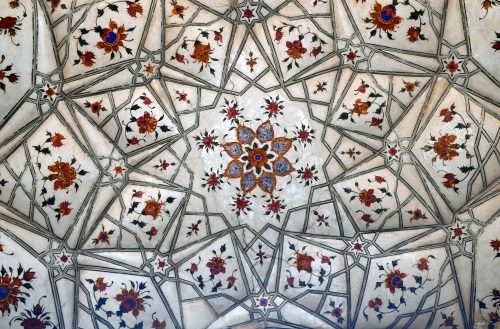
The mosque has impossibly perfect symmetry and complex structure familiar to Muslim architecture. With a large courtyard at its entrance, the visitor is left wide-eyed staring at an elegant mosque of commanding size and form. Elaborate yet elegant patterns adorn the walls and ceilings of the mosque, not overshadowing or covering, rather highlighting and complementing the complexity and perfection of the structure. Marble floors gracing the bare feet of worshippers are designed so each individual has a place to pray.
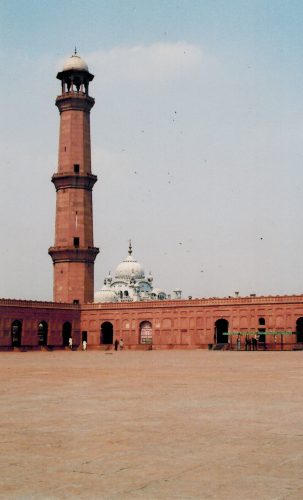
Once in the building, the mosque urges you to look back through the gateways on to the expansive courtyard and in the distance, next to one of the four minars of the mosque, is the sight of neighboring Sikh Gurdwara. Both cherished places of worship are in an embrace, perfectly representing Lahore and its connection to spirituality. The utmost attention is put to every aspect of the space and building, on the largest and smallest scale.
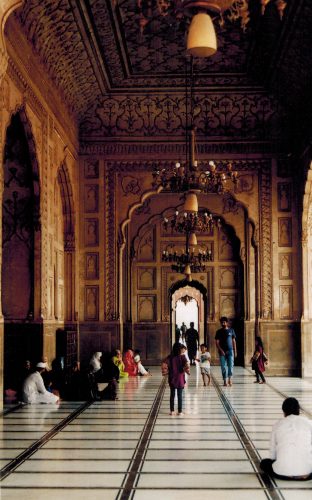
Amongst the grandeur, children laugh and play, young couples whisper secrets to each other and people pray. Being in the Badshahi Mosque feels like existing in the whispers and thoughts of God. Peace settles over you and the universe seems to hold you in its arms.


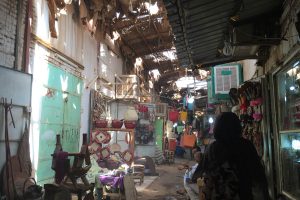


Leave a Reply